Winza Ruby - Birth Of A Legend
In November 2007 near the Tanzanian village of Winza rubies were discovered which cause quite a commotion on the international markets.
The story sounds like a fairy tale and actually began in the 1990ies. Back then an old farmer, who meanwhile passed away, reportedly found rubies on his farmland outside the village. Villagers today tell that the old man mined the rubies in secret and sold them to an old Somali man, who in turn sold the gems to traders in Dar es Salaam on regular trips.
Before the Somali deceased not too long ago, he summoned his son, who worked as a watchman in the capital, to his deathbed and passed the secret on to him. When the son, a Mr. Shabani, tried to continue the clandestine business, he was followed, the secret of the ruby mine was revealed and miners started to flock to Winza.
In December 2007 71 guests were registered with the village secretary. In January 2008 the number had risen to 700 and in May already 5 – 6.000 miners tried their luck.
At the same time buyers from Thailand, India and Sri Lanka moved in, who pitched camp in Mpwapwa, a small town about 100kms from Winza, because in Tanzania foreigners are not allowed into mining areas without a special permit. In Mpwapwa these traders buy the rough from Tanzanian brokers, who travel the distance on motorbikes.
Buying rough material is a particularly finicky business and one of the most difficult tasks is the detection of numerous synthetics, skilfully trimmed to resemble the real stuff. Life ain´t easy for gemtraders, as ardent readers of our news articles already know…
Be that as it may, the new rubies are the talk of the trade and the reasons for all that jazz are numerous.
First of all there is colour. A surprisingly high percentage of the material found shows a magnificent, pure red, hardly found in other locations. Moreover, Winza rubies do not require any form of heat-treatment to develop the colour to full beauty.
Next in line is clarity. Of course in Winza, as in other ruby mines, ample amounts of rough are mined, which is suitable for cabochons at best, but the yield of clean stones in gem quality is unsurpassed by other sources.
The third superlative concerns size. Winza in one year probably produced more stones of 10cts and above, than all other ruby locations combined.
To support these admittedly fantastic claims, I appeal to Dr. Adolf Peretti of the Gemresearch Swisslab (GRS) as a witness. Of the 592 top quality ("eyeclean and of vibrant red colour") Winza rubies, which the GRS examined in 2008, 28 gems exceeded 10cts and more than 30 received the prestigious GRS Platinum Award, confirming that they are considered to be amongst the world´s best rubies. Not bad, for a merely one year old mine!
As if that were not enough, the new rubies sport unique inclusions, which facilitate identification considerably. Thus high-tech identification methods like energy dispersive X-ray fluorescence (EDXRF) or infrared spectroscopy will have to be applied for eyeclean specimens only.
Many stones show long and curved (!) needles, unknown in rubies from any other source, a nut, which hopefully the producers of synthetic gems will find too hard to crack for many years to come.
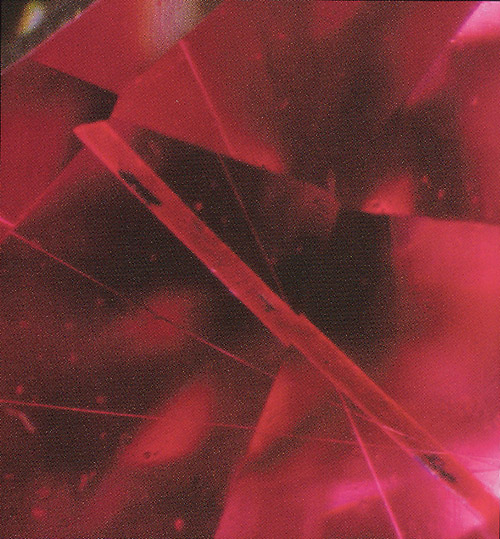
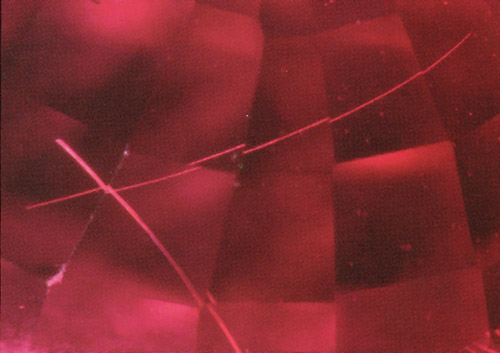
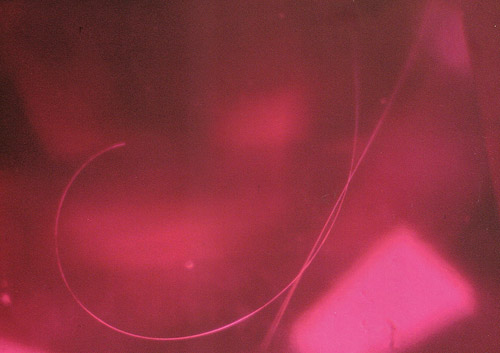
Equally specific is a form of blue colour zoning, which was never before observed in rubies.
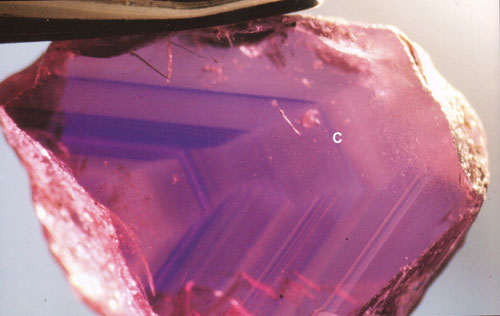
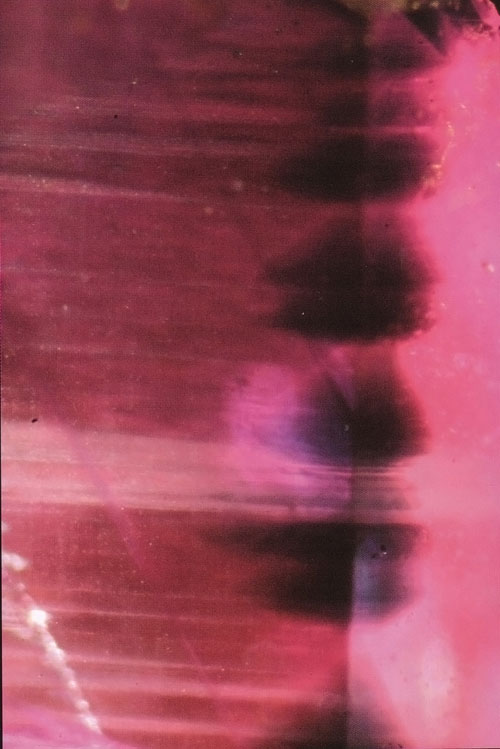
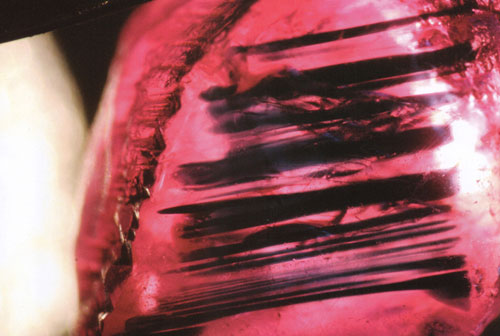
These blue zones might have a convenient side effect. Winza rubies contain high amounts of iron. All iron-rich rubies e.g. Thai rubies, show only weak fluorescence but, alas, they also very often sport an undesirable orange or even brownish tinge. The assumption is, that the blue zones compensate this tinge and thus produce the pure red colour.
Also frequently seen in Winza rubies are feathers of multi-phase-inclusions i.e. cavities filled with solid, fluid and gaseous inclusions.
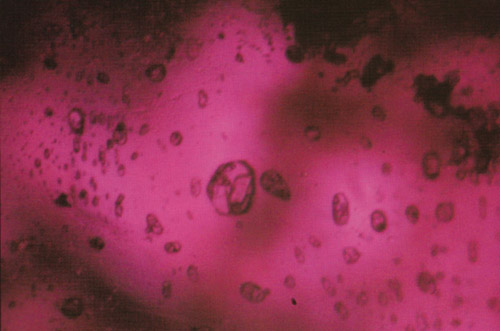
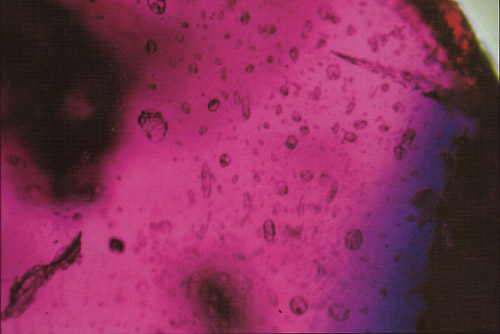
Last but not least lovers of beautifully crystallized mineral inclusions will get their money worth. Amongst the guest crystals, which so far have been identified, are pargasite, spinel and orange garnet.
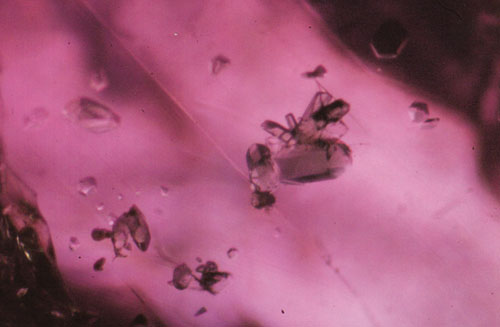
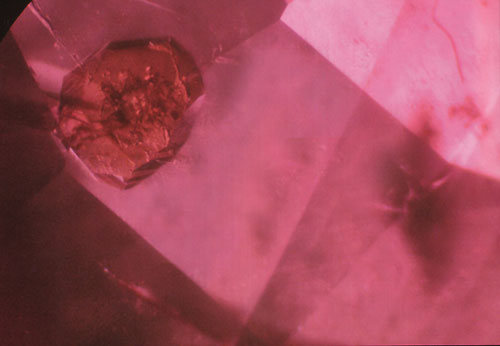
So let´s hope, that the mining activities, which saw a sharp decline in late 2008 because of a nearby gold find and because mining with pick and shovel had reached it´s limit, will gain momentum again, as heavy machinery should be in position by now.
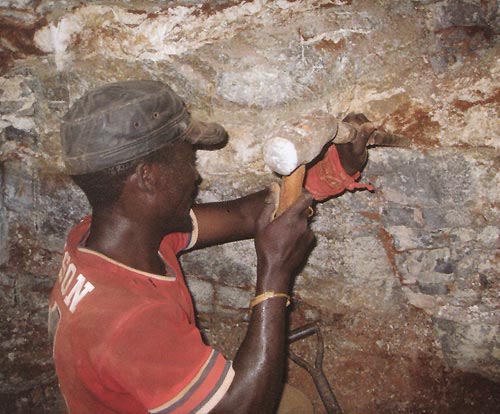
For more detailed information we recommend this excellent publication:
Contributions to Gemology, No. 7 December 2008 Second Edition
GRS Gemresearch Swisslab AG
Postfach 4028
CH 6002 Luzern
GRS (Thailand) Co., Ltd
257/919 Silom Rd. JTC Building
Bangkok 10500, Thailand
Also highly recommendable is an internet article published by renowned gemologist Vincent Pardieu.
http://www.fieldgemology.org/...winza.php
I explicitely thank Dr. Adolf Peretti for the kind permission to publish all of the above pictures and photos (copyright Dr. A. Peretti).
 Deutsch
Deutsch